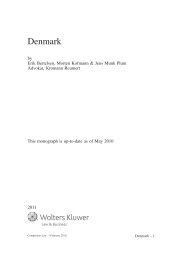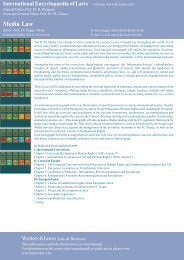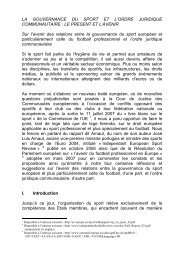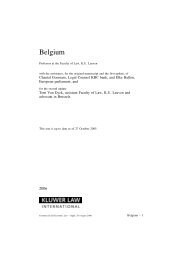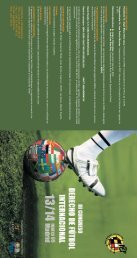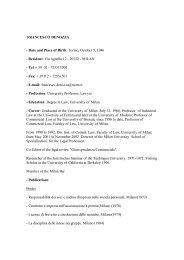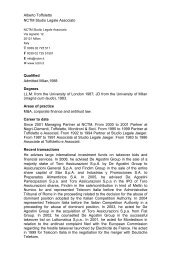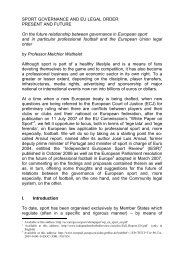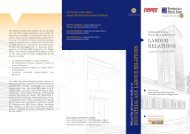USA - International Encyclopaedia of Laws
USA - International Encyclopaedia of Laws
USA - International Encyclopaedia of Laws
You also want an ePaper? Increase the reach of your titles
YUMPU automatically turns print PDFs into web optimized ePapers that Google loves.
121–124Part II. Forms <strong>of</strong> Sub-national GovernmentsChapter 1. General§1. INTRODUCTION121. Sub-national units in a federal system enjoy an independent constitutionalstatus and exercise independent powers. That is, their existence and theirpowers are constitutionally guaranteed rather than under the control <strong>of</strong> thenational government.122. The U.S. Constitution safeguards the position <strong>of</strong> the American statesin the federal system in several ways. First, it grants only limited powers to thenational government and reserves ungranted powers to the states (or the people).The Tenth Amendment states: ‘The powers not delegated to the United Statesby the Constitution, nor prohibited by it to the States, are reserved to the Statesrespectively, or to the people.’ Although this may initially have been the mostimportant protection for the states, the expansion <strong>of</strong> national power, togetherwith the U.S. Supreme Court’s acquiescence in its expansion, has raisedquestions about whether this continues to be an effective safeguard <strong>of</strong> stateautonomy. During the 1990s, the Supreme Court has shown a greater interestin safeguarding state power and curtailing overreaching by the nationalgovernment; 1 but its recent rulings have blocked the further expansion <strong>of</strong>national power rather than reversing the effects <strong>of</strong> earlier rulings that producedthat expansion.1. See, for example, United States v. Lopez, 514 U.S. 549 (1995); Seminole Tribe <strong>of</strong> Floridav. Florida, 116 S.Ct. 1114 (1996); City <strong>of</strong> Boerne v. Flores, 117 S.Ct. 2157 (1997); andPrintz v. United States, 117 S.Ct. 2365 (1997).123. Second, the Constitution grants extraordinary protection to theterritorial integrity <strong>of</strong> the states, forbidding tampering with state boundaries notonly by congressional legislation but also by the normal processes for constitutionalamendment. Article VI, section 3 <strong>of</strong> the Constitution states: ‘no new Stateshall be formed or erected within the Jurisdiction <strong>of</strong> any other State; nor anyState be formed by the Junction <strong>of</strong> two or more States, or parts <strong>of</strong> States,without the Consent <strong>of</strong> the Legislature <strong>of</strong> the States concerned as well as <strong>of</strong> theCongress.’124. Third, the Constitution secures to the states a role in the selection <strong>of</strong>federal <strong>of</strong>ficials and in the processes <strong>of</strong> the national government. Initially, stateConstitutional Law – Suppl. 34 (October 1999) <strong>USA</strong> (Sub-national) – 53



